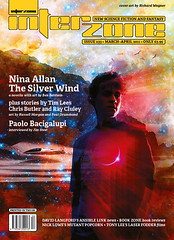
Amnesty International Blackheath & Greenwich Group tweeted to ask me to let people know about their book sale at the Church of the Ascension in Blackheath on the 23rd November. I’m very pleased to do so, having picked up some gems there in previous sales such as a copy of Jon Snow’s “Shooting History” which had been autographed by the author and a 119-year-old copy of John Stuart Mill’s “On Liberty”.
Amnesty’s press release gives the details:
Quality books at knock-down pricesAmnesty International Book Sale
10am-4pm Saturday 23 November
Church of the Ascension, Dartmouth Row, London SE10 8BF
The Blackheath and Greenwich Group of Amnesty International is holding its annual fund-raising book sale on Saturday 23 November at the Church of the Ascension, Dartmouth Row, London SE10 (10 minutes walk up Lewisham Hill from Lewisham Station, DLR & Bus Station). Doors open at 10am.
The local group has collected thousands of books from a variety of sources, including publishers and book reviewers as well as individual donors. The quality of books – many of which are brand new – is exceptionally high, and there will be plenty of bargains to be found, from second-hand paperbacks to review copies of recently-published novels. Prices start at £1 for paperbacks and £3 for hardbacks.
The group’s book sales – now in their 39th year – are established as Amnesty International’s most successful local fundraising event in the UK, raising over£200,000 over the years.
Amnesty International works worldwide for the release of prisoners of conscience, fair trials for political prisoners and an end to torture, extrajudicial executions, disappearances and the death penalty. The Blackheath and Greenwich group has done a lot of campaigning work on Human Rights in China and stopping violence against women and meets at 8pm on the second Tuesday of each month at St. Margaret’s Church, Lee Terrace, Blackheath.
To find out more information about the Amnesty Blackheath and Greenwich group visit www.amnestybg.wordpress.com
One thing to be aware of: if you drive to the sale and park in Dartmouth Row make sure you check the time on your pay-and-display ticket – it is calculated in an unusual way. The tariff is 35 pence for 15 minutes, but you can only buy 15 minute units, and it “accepts over-payment”. This means that if you put in £2.00 you get only an hour and a quarter instead of the nearly an hour and a half you’d expect and you donate an over-payment of 25p to Lewisham Council. The traffic wardens seem to be especially vigilant around there too!









